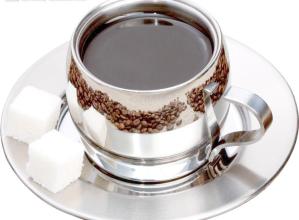Description of Coffee Bean Flavor in San Pedro Manor, Puerto Rico
Dry aroma (1-5): 3.5
Wet aroma (1-5): 3.2
Acidity (brightness) (1-10): 8
Taste (layered) (1-10): 8.4
Taste (alcohol thickness) (1-5): 3.6
Aftertaste (residue) (1-10): 8
Balance (1-5): 0
Basic score (50): 50
Total score (maximum 100): 84.7
Intensity / main attributes: light intensity / soft, balanced island coffee
Recommended baking degree: city+
Contrast: island coffee, not only has the mellow of other island coffee, and has a beautiful bean shape, as well as rich taste
The Caribbean Sea is a warm, romantic and mysterious sea, and a lot of good coffee is also around this ring sea, such as the Blue Mountains of Jamaica, the Dominica, the Crystal Mountains of Cuba, Yuko of Puerto Rico and so on. These are the most famous rare and expensive coffee in the world. These island beans give people a light milky aroma and elegant floral aroma, acidity and meticulous softness. Although it is still difficult to avoid the problem of easy water loss of coffee caused by the muggy climate of the island, the overall texture is the first-grade beans of coffee. Puerto Rico coffee is not easy to buy on the market because the output is small and most of it is exported to Europe. In addition, suffering from the adverse effects of severe weather hurricanes on coffee crops, there will be no coffee to buy coffee for the whole year and grow coffee to bring them a good return. They dominated the coffee industry on the island in the 1860s, when Puerto Rico produced the sixth largest coffee bean in the world. The coffee trees planted by Corsican immigrants on the highlands were considered selected, and the origin of Yauco Selecto coffee beans was mainly traced back to this period. However, two strong hurricanes hit Puerto Rico in 1898, which destroyed the local coffee industry. Farmers have to wait two years to get their crops back to normal, during which the United States is interested in Puerto Rico's sugar production, and European countries no longer impose tariffs on Puerto Rico coffee beans as crops produced in their colonies. Puerto Rico coffee was hit hard.

Important Notice :
前街咖啡 FrontStreet Coffee has moved to new addredd:
FrontStreet Coffee Address: 315,Donghua East Road,GuangZhou
Tel:020 38364473
- Prev

Introduction to the regional treatment of coffee bean varieties in Santa Cruz Manor, Ecuador
For coffee, the most important thing is to understand the soil and altitude in which it grows will have a significant impact on the quality of coffee products. Alpine coffee from Ecuador is produced at an altitude of about 1000-2000 meters. Coffee from different soils has different tastes. Its taste is very interesting, a little sour and bitter, coupled with aromas and sweetness of fruit, grass and chocolate, for making ES
- Next

Introduction of Coffee Bean Flavor description and Grinding scale in Atlanta Manor, Jamaica
Alpine Coffee (Jamaica High Mountain Supreme Coffee Beans) is called Alpine Coffee, which is produced below 666m in the Blue Mountain area of Jamaica, and is second only to Blue Mountain Coffee in quality. It is called a brother variety of Blue Mountain Coffee by industry insiders. Jamaica Blue Mountain caffeine produces very little, so if you want to taste Jamaican coffee, then buy teeth.
Related
- Does Rose Summer choose Blue, Green or Red? Detailed explanation of Rose Summer Coffee plots and Classification in Panamanian Jade Manor
- What is the difference between the origin, producing area, processing plant, cooperative and manor of coffee beans?
- How fine does the espresso powder fit? how to grind the espresso?
- Sca coffee roasting degree color card coffee roasting degree 8 roasting color values what do you mean?
- The practice of lattes: how to make lattes at home
- Introduction to Indonesian Fine Coffee beans-- Java Coffee producing area of Indonesian Arabica Coffee
- How much will the flavor of light and medium roasted rose summer be expressed? What baking level is rose summer suitable for?
- Introduction to the characteristics of washing, sun-drying or wet-planing coffee commonly used in Mantenin, Indonesia
- Price characteristics of Arabica Coffee Bean Starbucks introduction to Manning Coffee Bean Taste producing area Variety Manor
- What is the authentic Yega flavor? What are the flavor characteristics of the really excellent Yejasuffi coffee beans?

